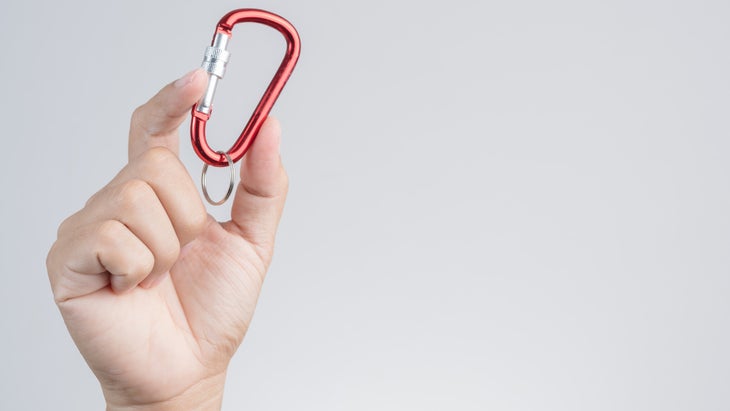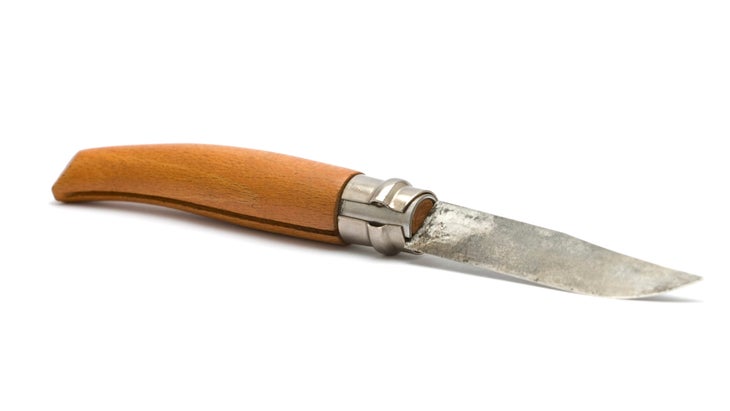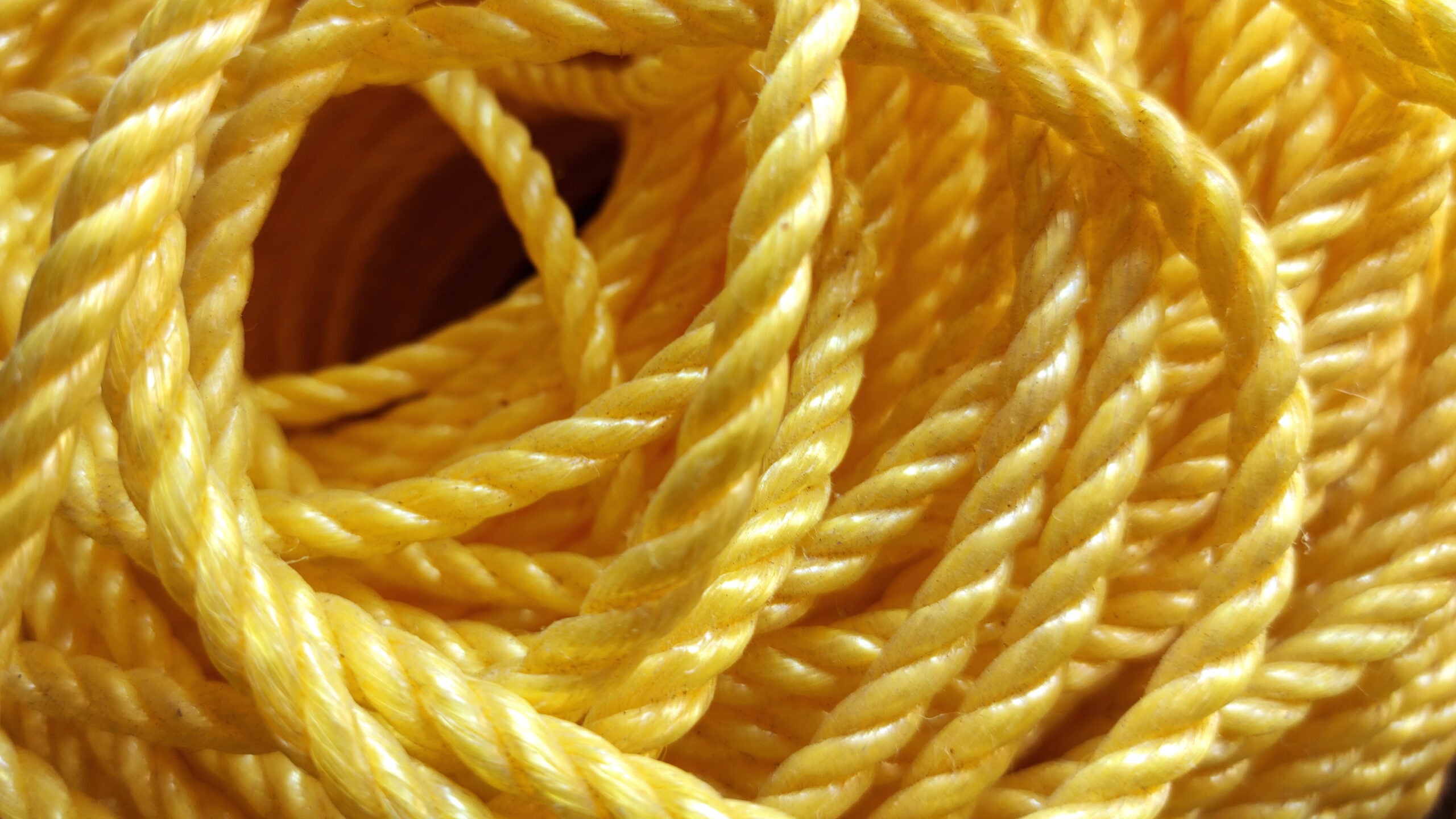Climbing magazine’s growing submissions highlight the and practices that climbers see on the crag and at the gym. Contributor Kevin Corrigan offers his sage advice on why you should—or definitely should not—do what the following three emailers have seen in the field. Note: do not try these at home (or anywhere else).
Climbing with a Rope from Home Depot
During my senior year of high school, my friends and I were bored. We decided we collectively knew enough about climbing for it to be safe, so we went to the local outfitter and bought harnesses, carabiners, and belay devices, but we scoffed at the price of a rope. It was way outside our budget. Instead we went to Home Depot and bought 100 feet of poly cord that was rated for 200 pounds. We climbed on that rope all day, just easy 5.3 climbing on top rope. It wasn’t until I was lowering at the end of the day that I realized what a mistake I’d made. The 100-foot rope had stretched to about 200 feet, shrinking to the size of eight-millimeter cord. I bought a real climbing rope the following week. I wanted to share because we are all new at some point, and even with the best intentions, mistakes are made. We should collectively work together to improve safety across the sport. I wish someone would have stopped us from climbing on that poly rope. —Kyle Harris
��������Dz�:��Modern climbing ropes include a number of climber-friendly features: They can hold thousands of pounds of force. They have durable sheaths that prevent abrasion and cutting. They have the ideal amount of stretch to catch a fall softly and then bounce back to their original length and diameter. They’re supple and easy to tie and untie. They’re tested to meet rigorous safety standards. And they work great with modern belay devices. A random hardware-store rope is not designed with any of these goals in mind and can’t be expected to meet them. Always use proper climbing gear designed and rated for climbing.
Using a Toy Carabiner

I watched a guy try his first sport lead outside. He bailed after the fourth bolt. None of his friends wanted to try the route, so an older climber instructed him to thread the rope directly through the bolt hanger so he wouldn’t have to leave a bail carabiner. Then the older gentleman proudly recounted a story of how he was two pitches up on a route and couldn’t finish it. Instead of leaving a real carabiner behind, he used a toy carabiner because it was cheaper. He said, “Those things only hold 500 pounds or so, but I was just too cheap to leave a real carabiner.”—Kevin Kuo
Lesson: There are many ways to safely bail off a sport route. Threading the rope directly through a bolt hanger is usually not one of them. Check out the methods in and be sure to carry a couple bail carabiners or quick links in case you need to go down because you can no longer go up. Although slightly more expensive (really only a couple bucks), it’s more polite to leave carabiners. At best, quick links are hard to remove for the next person that leads the route; at worst, they can rust shut and become very hard to remove. Keep in mind that you may be able to retrieve gear by walking to the top of the cliff and rappelling, climbing the next route over, or asking a stronger friend to climb the route.
Toy carabiners usually have something like “Not for climbing” or “Not load bearing” printed right on them, because they’re not load bearing. Five hundred pounds is a very generous estimate—they’re intended to hold a set of keys or maybe a water bottle, absolutely not a person. If your life is worth so little to you that you’re willing to risk it instead of leaving behind gear that costs roughly the price of a hamburger, then I can’t help you. You’ll get better advice from a therapist.
Belaying While Carrying a Knife

I witnessed this mess at Poke-O-Moonshine in the Adirondacks: The guy was belaying his presumed wife up the first pitch of Gamesmanship. He had a block of cheese in one hand and an Opinel knife in the other. The knife was pointed at him, and he was cutting toward himself—at least it wasn’t toward the rope! The belay device was upside down, no eyes on the climber. The moment he put the knife down, she fell past her last three placements. She proceeded to explain that her foot slipped and it was very unexpected. —Dylan Kunkel
Lesson: Repeat after me: No sharp objects near your climbing rope. Ever. This is such an important rule that rope manufacturers recommend you don’t use scissors to open the packaging of a new rope. Your rope is your lifeline. You should take every precaution to keep it intact. This means extending protection and anchors to keep it from running over sharp edges, using a tarp to keep abrasive dirt out of the sheath when belaying, and keeping knives away from it, no matter how hungry you are. A rope under tension can be cut fairly easily. But even if you didn’t care about your climber’s safety, this scenario also presents significant danger to the belayer. Lead belayers experience fairly chaotic jolts during a fall. If you’re holding a knife, you may not be happy with where it ends up after a catch. Beyond that, this belayer needs to relearn the basics. Always pay full attention to your climber. Use gear as the manufacturer recommends. And never take your hand off the brake strand. Most falls are unexpected. If you don’t have a hand on the brake strand, you’re not belaying; you’re watching your climber free solo.


